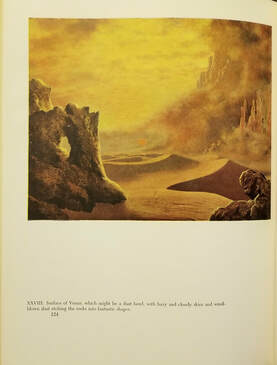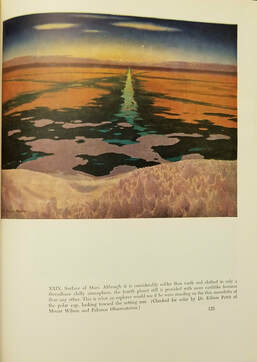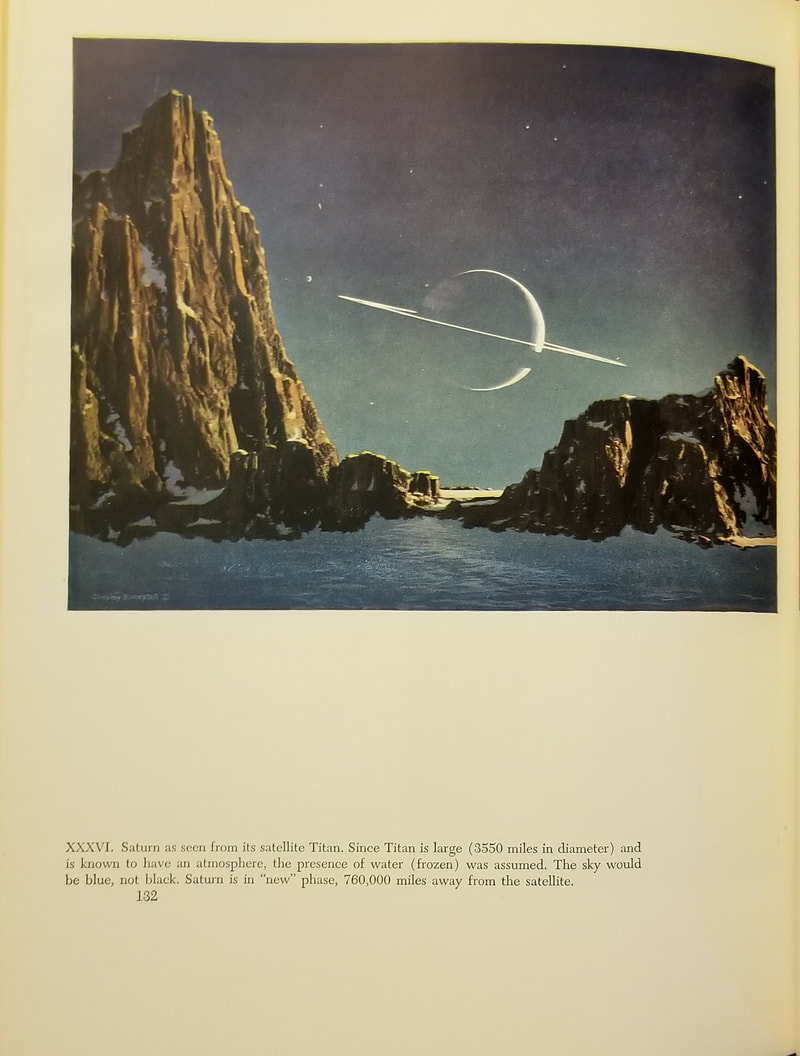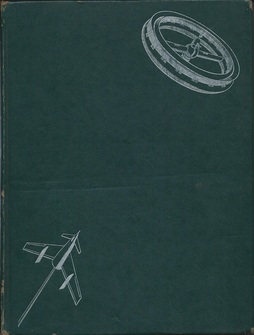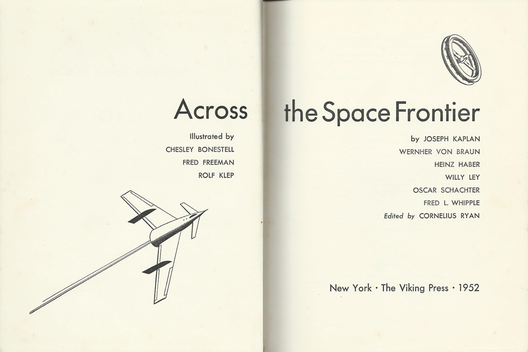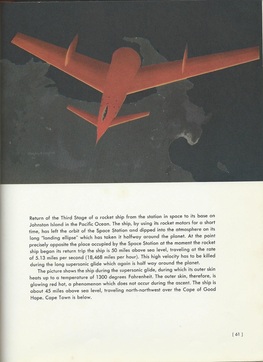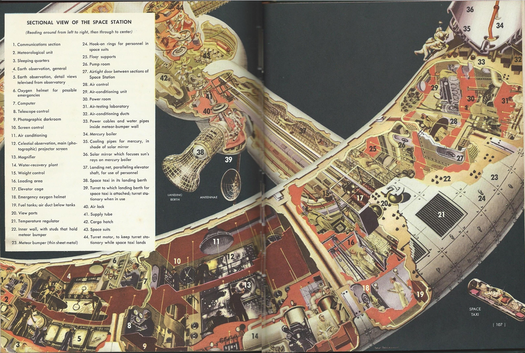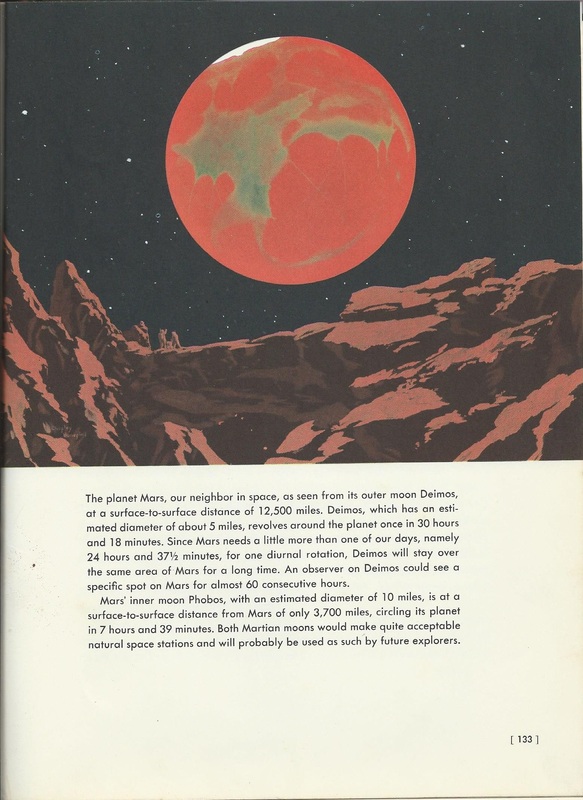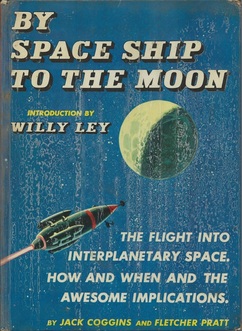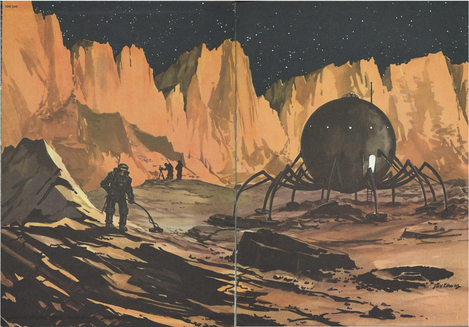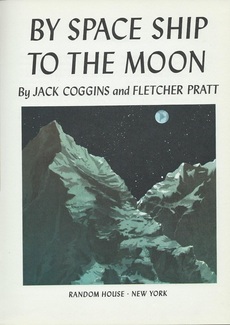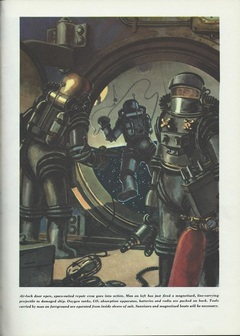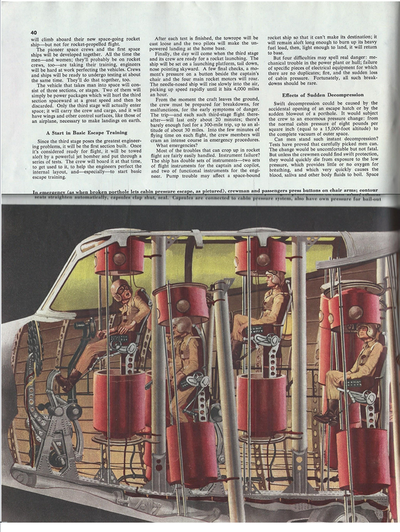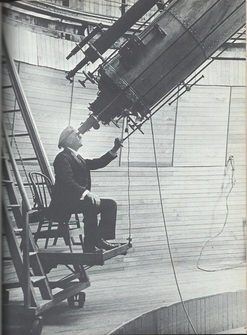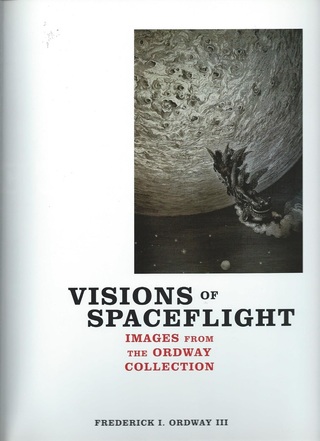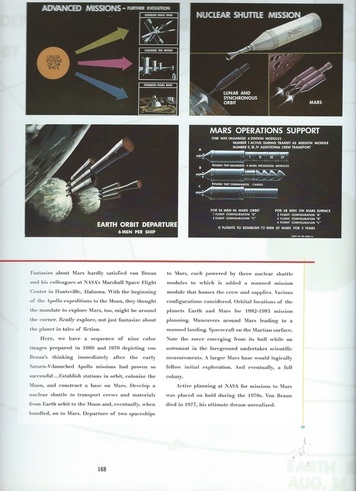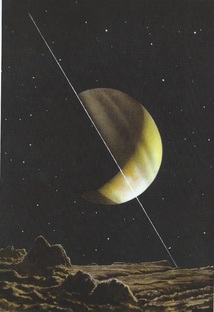Science Fiction/Science Fact
Some books mix science fiction with science fact, whether purposefully, in trying to explain or demonstrate conventions of the SF genre, or simply by their placement in time.
Either is enjoyable, but I find art on the very cusp of science fiction, when painters were looking into the future with as realistic an eye as possible, to be particularly charming. Ah, the joy of Chesley Bonestell visions of space flight that seemed perhaps only a decade or two away, for example, and the patient detail of Fred Freeman’s meticulous, draftsman-like illustrations! Those books that depict the unabashedly science-fictional art of the past can be most pleasant as well.
This page, therefore, showcases both types of works.
Either is enjoyable, but I find art on the very cusp of science fiction, when painters were looking into the future with as realistic an eye as possible, to be particularly charming. Ah, the joy of Chesley Bonestell visions of space flight that seemed perhaps only a decade or two away, for example, and the patient detail of Fred Freeman’s meticulous, draftsman-like illustrations! Those books that depict the unabashedly science-fictional art of the past can be most pleasant as well.
This page, therefore, showcases both types of works.
I picked up Across the Space Frontier around 20 years ago at an antique joint that unforunately no longer exists. If I recall, the book was $5—an incredible steal for an original 1952 classic, even when lacking the dust jacket.
OK, I cheated a little by including this one, because Collier's magazine of course is not a book. Ah, but it sure is big, and it sure is illustrated—by Chesley Bonestell and Fred Freeman, no less. This is from the third and last article of a series of 1952 and 1953 on the coming exploration of space. Notice, by the way, the use of the Von Braun-designed rocket also seen in Across the Space Frontier.
For an original book about Mars by Percival Lowell, see my Vintage Hardcovers page.




